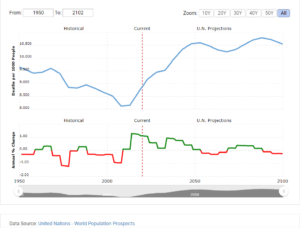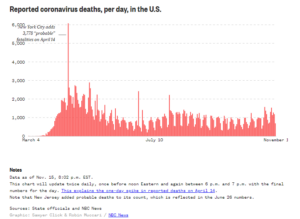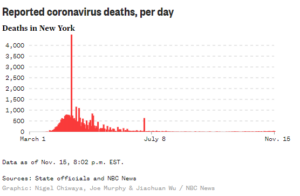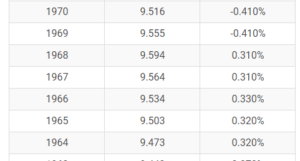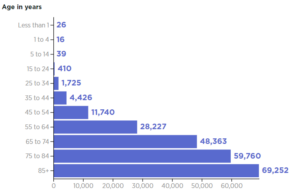The lack of sufficient food and outright famine was widespread problem in World War II although it is not something most Americans are aware of. Typically, the urban areas had it worst. This was partially because those in the countryside were growing their own food and partially because of German policy. Take the “Hunger Plan” for example……
The German “Hunger Plan” called for “the annihilation of what the German régime perceived as a superfluous population (Jews, and the population of Ukrainian large cities such as Kiev, which received no supplies at all); extreme reduction of rations for Ukrainians in the remaining cities; and reduction in foodstuffs consumed by the farming population.”
Now this plan was not fully implemented, but there were massive famines in the Ukraine. And from everything I have read, those in the countryside faired far better than those in urban areas in part because it was impossible for the Germans to get farmers to grow food for them and at the same time prevent the farmers from feeding themselves. Also, disruptions in supply lines from the fighting impacted the urban areas that needed to import their food a lot more then it impacted the rural areas that grew the food. We can see this same dynamic (urban famine, rural areas doing comparatively better) all over Europe.
One example would the be the “Great Famine” in Greece. As Wikipedia puts it (emphasis mine)…..
The nutritional situation became critical in the summer of 1941 and in the autumn turned into a full-blown famine. Especially in the first winter of occupation (1941–42) food shortage was acute and famine struck especially in the urban centers of the country. Food shortage reached a climax and a famine was unavoidable. During that winter the mortality rate reached a peak, while according to British historian, Mark Mazower, this was the worst famine the Greeks experienced from ancient times. Bodies of dead persons were secretly abandoned in cemeteries or at the streets (possibly so their ration cards could continue to be used by surviving relatives). In other cases, bodies were found days after the death had taken place. The sight of emaciated dead bodies was commonplace in the streets of Athens.
The situation in Athens and the wider area with its port, Piraeus, was out of control, the hyperinflation was in full swing and the price of bread was increased 89-fold from April 1941 to June 1942. According to the records of the German army the mortality rate in Athens alone reached 300 deaths per day during December 1941, while the estimates of the Red Cross were much higher, at 400 deaths while in some days the death toll reached 1,000. Apart from the urban areas the population of the islands was also affected by the famine, especially those living in Mykonos, Syros and Chios.
There are no accurate numbers of the famine deaths because civil registration records did not function during the occupation. In general, it is estimated that Greece suffered approximately 300,000 deaths during the Axis occupation as a result of famine and malnutrition. However, not all parts of Greece experienced equal levels of food scarcity. Although comprehensive data on regional famine severity does not exist, the available evidence indicates that the severe movement restrictions, the proximity to agricultural production and the level of urbanization were crucial factors of famine mortality.
We can read similar things about the Dutch famine during World War II. Again, going by Wikipedia (emphasis mine) …..
Food stocks in the cities in the western Netherlands rapidly ran out. The adult rations in cities such as Amsterdam dropped to below 1000 calories (4,200 kilojoules) a day by the end of November 1944 and to 580 calories in the west by the end of February 1945. Over this Hongerwinter (“Hunger winter”), a number of factors combined to cause starvation in especially the large cities in the West of the Netherlands. The winter in the month of January 1945 itself was unusually harsh prohibiting transport by boat for roughly a month between early January 1945 and early February 1945. Also, the German army destroyed docks and bridges to flood the country and impede the Allied advance. Thirdly, Allied bombing made it extremely difficult to transport food in bulk, since Allied bombers could not distinguish German military and civilian shipments. As the south-eastern (the Maas valley) and the south-western part of the Netherlands (Walcheren and Beveland) became one of the main western battlefields, these conditions combined to make the transport of existing food stocks in large enough quantities nearly impossible.
The areas affected were home to 4.5 million people. Butter disappeared after October 1944, shortly after railway transport to the western parts of the Netherlands had stopped in September due to the railway strike. The supply of vegetable fats dwindled to a minuscule seven-month supply of 1.3 liters per person. At first 100 grams of cheese were allotted every two weeks; the meat coupons became worthless. The bread ration had already dropped from 2,200 to 1,800 and then to 1,400 grams per week. Then it fell to 1,000 grams in October, and by April 1945 to 400 grams a week. Together with one kilogram of potatoes, this then formed the entire weekly ration. The black market increasingly ran out of food as well, and with the gas and electricity and heat turned off, everyone was very cold and very hungry. In search of food, young strong people would walk for tens of kilometers to trade valuables for food at farms. Tulip bulbs and sugar beets were commonly consumed. Furniture and houses were dismantled to provide fuel for heating.
In the last months of 1944, in anticipation of the coming famine, tens of thousands of children were brought from the cities to rural areas where many remained until the end of the war. Deaths in the three big cities of the Western Netherlands (The Hague, Rotterdam, and Amsterdam) started in earnest in December 1944, reaching a peak in March 1945, but remained very high in April and May 1945. In early summer 1945 the famine was brought quickly under control. From September 1944 until May 1945 the deaths of 18,000 Dutch people were attributed to malnutrition as the primary cause and in many more as a contributing factor.
There are a lot of other similar stories that could be told about World War II but the bottom line is that food scarcity was an issue in many areas during World War II and it always seemed to hit hardest in the urban areas. Now I think to a lot of people this is sort of like announcing that water is wet. Who would expect anything differently?
But the fact that the experience of World War II accords with people’s natural expectations is precisely the problem. The things that enabled rural areas to do better during times of food shortages at the time of World War II no longer hold true and yet I don’t think people have updated their thinking to account for the changes.
As Chelsea Green’s “A Short History of the Agricultural Seed” says (emphasis mine)……
These changes didn’t “take” with farmers overnight. First of all, many of these inputs were expensive, and most farmers were not operating on a cash-intensive system—they produced all or most of their own fertility, feed, and seed for their farms. Pesticides, nitrogen fertilizer, and even tractors wouldn’t become commonplace on North American or European farms until after World War II, and even later in other parts of the world. The main source of fuel on the farm was the grain and hay produced on-farm for horses. It’s hard to believe now that only 100 years ago, even in countries that were rapidly industrializing, most of the population lived on farms that were largely self-sufficient, breeding their own animals and growing their crops from seed they had grown.
I don’t think many people have fully internalized how unprecedented modern times are compared to most of recorded history. Urban areas have always been vulnerable to the collapse of complicated supply lines since the time of the Bronze Age collapse. Rome famously lived in fear of its grain supplies being cut off just as much as Great Britain feared submarines. But at the time of World War II a farmer in Great Britain could feed himself even if there were not enough famers in Great Britain to feed the largely urban population of what was one of the most urbanized countries in the world at the time. But now a farmer cannot feed himself without the aid of a long and complicated supply line anymore then a city dweller can.

